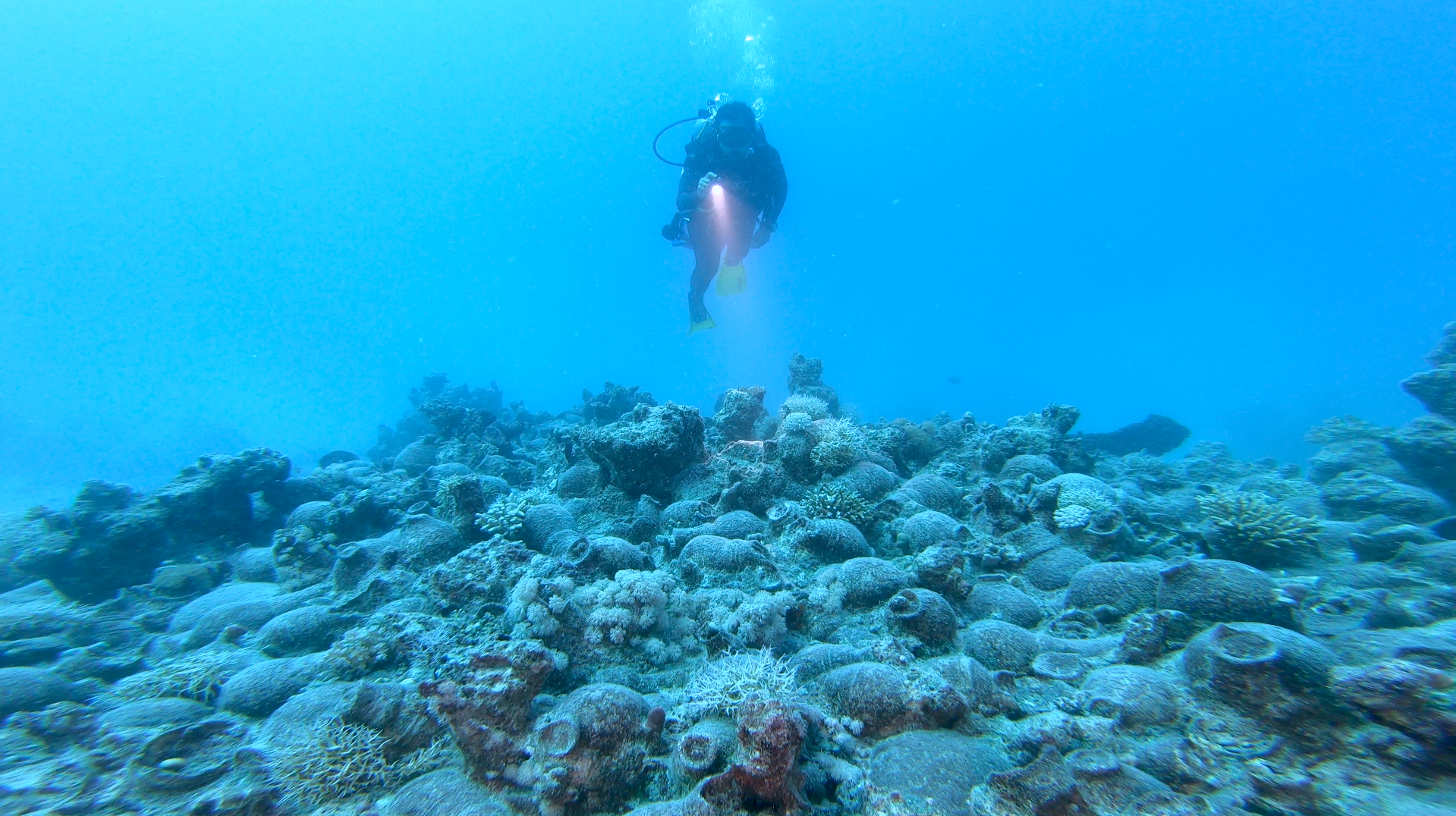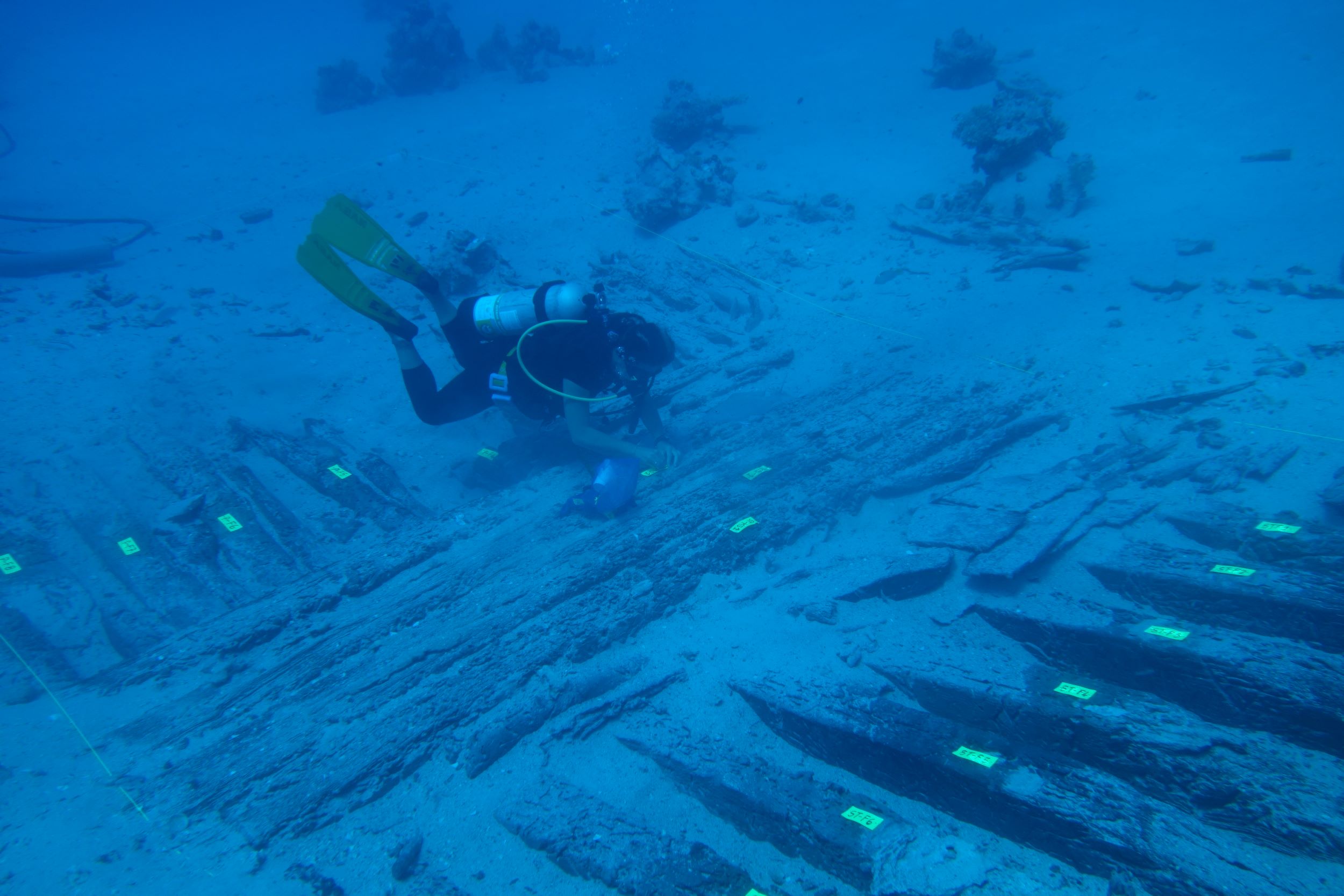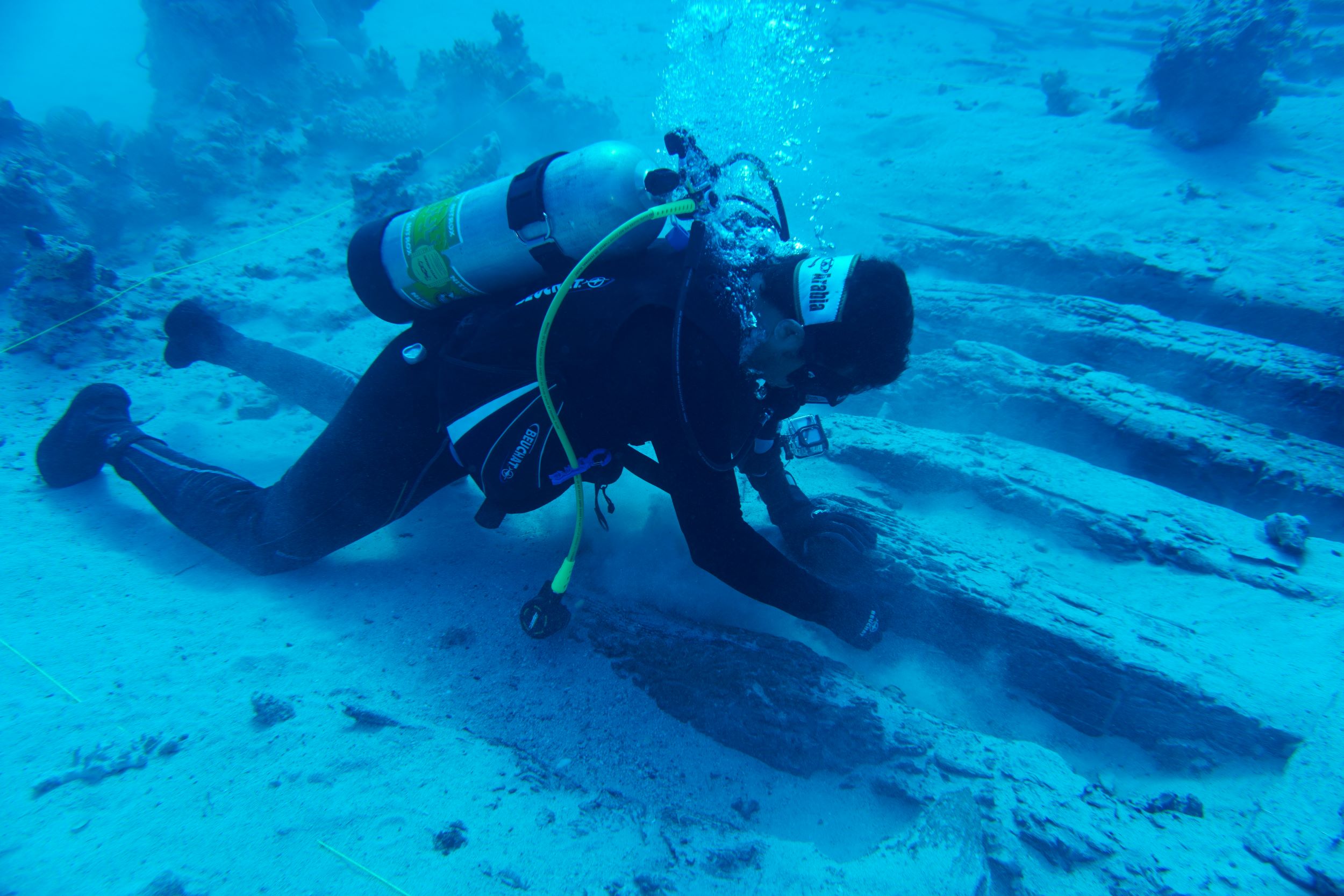The Umluj shipwreck- 2024- Ongoing
Dr. Chiara Zazzaro
The UmLuj shipwreck lies some 20-23 m east of an isolated reef extending around 1 km north- east to southwest, located between the Shaybārā (Sheibara) reef and the island of al-Hassānī, 16 miles from the city of UmLuj on the Saudi coast of the Red Sea. This area comprises several groups of continuous or scattered reefs. Navigating this section of the Red Sea requires good experience and knowledge of the wind patterns and the coral reefs that still provide shelter for the boats. Along with other two shipwrecks previously excavated in the Red Sea, the Sharm el Sheik and the Sadana Island, the UmLuj shipwreck has been identified as a merchantman of the 18th-century which sailed up and down the Red Sea with food provisions from Ottoman Egypt to Mecca and returned with locally produced jars, Chinese porcelain and exotic products from the Indian Ocean acquired in the ports of Jeddah and Mocha. The first two field seasons conducted in 2015 and 2016 focused on surveying the area of the shipwreck to understand its historical and archaeological significance, the wreck formation and the circumstances that caused the wreckage, to investigate in depth the mound of water jars, and to evaluate the most suitable areas for a test excavation. This excavation was the object of the 2022 field season which provided further information on the large variety of products the ship was carrying, originated from three continents and including both mass products (water jars and tobacco pipes) and products that were more competitive on the market, such as porcelain and spices. Aim of the next field season is that of continuing the excavation of the fore part of the ship.
The research questions that the project will attempt to answer are the following:
– Was there any other reason why the ship sunk a part hitting the reef?
– How much of the ship and of the cargo is preserved?
– How was the cargo distributed on the fore part of the ship?
– What did the “organic” cargo include? What types of spices or exotic products were imported from the Indian Ocean?
– What shipbuilding tradition can be attributed to this ship? Can the ship architecture be considered “Mediterranean”?
– What was the identity of the crew and of other passengers/people on board? Is it possible to understand the purpose of their trip from Jeddah to Egypt?
– Were there weapons on board?







